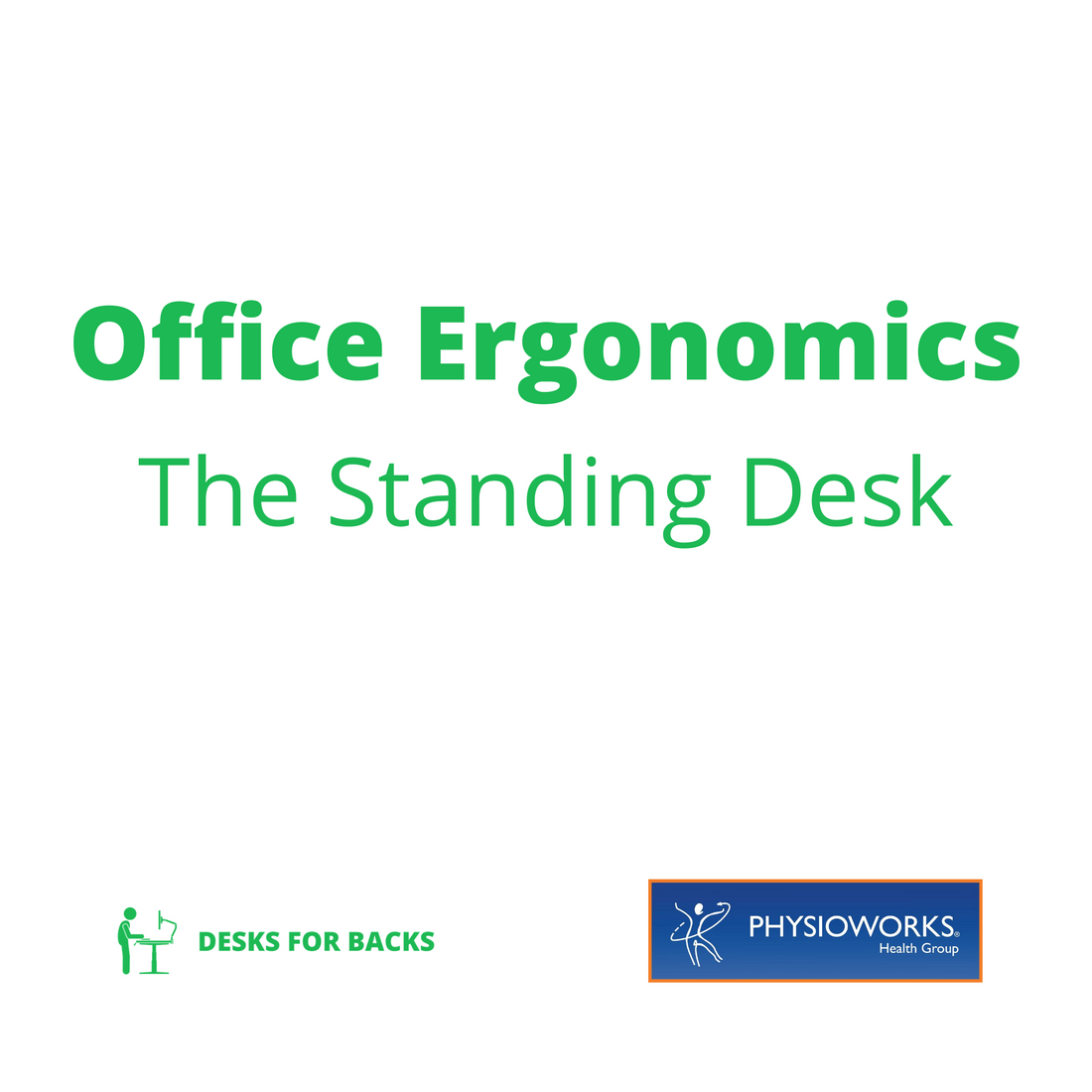By Andrew Dalwood (FACP) Specialist Musculoskeletal Physiotherapist
Standing desks, or desk converts/risers added to the desk to allow for standing positions, have gained a lot of attention over the last few years. Standing desks have become a popular addition or request in many workplaces.
There are multiple theories and points of view as to why standing desks are becoming of a requested addition to the workplace, including:
- The sedentary nature of sitting based jobs can be overcome with the addition of increased periods of standing across the day.
- It allows for regular change in posture from the sitting to standing position easing the stress on the back and generally the body.
- Some reports have purported weight loss and increased calorie burn.
However, is important to understand that standing desks are not appropriate for everyone.
There are certainly risks associated with prolonged standing, as well as prolonged sitting. Some of the risks from excessive standing have been well known for years, relating back to soldiers on guard duty developing postural hypotension and fainting, to factory workers developing issues with back, hips, knees, ankles and varicose veins.
So we must take the standing desk trend with caution. Any implementation of standing desks must take into account:
- The risks of aggravation of pre-existing complaints (e.g plantar fasciitis, ankle/knee/hip osteoarthritis, certain back conditions like stenosis, spondylolithesis)
- Other health conditions that preclude a person from prolonged standing? (e.g vascular conditions of the lower limbs/balance disorders)
- Standing desks are unlikely to have any benefit on neck, wrist or shoulder issues, as discomfort in these areas are more related to screen height and keyboard or mouse use.
- Just like sitting in a poor posture, you can definitely stand in a poor posture, placing increase stress on the feet, knees, hips and back, which can lead to the development of new complaints.
While it is known that standing can certainly be useful for some back complaints, it is just as important to work out how much standing is good and how much isn’t so good. Therefore, I have a few rules when trialling a standing desk unit:
1/. Are you medically suited to standing?
2/. What is your current standing tolerance (eg at a party or in a queue- can you stand for at least 15-20 minutes)
3/. What is your walking tolerance?
Can you walk at least for 15- 20 minutes. (This gives an indication your muscles are adequate enough to support you for an appropriate time in standing for the change to be of any use).
4/. You need to wear correct footwear, solid shoes with socks and no high heels.
5/. You need to stand well, feet equally apart, with the weight equally spread, soft/slightly bent knees and no hang standing (i.e all your weight on one leg)
6/. You need to slowly build up the time spent at standing desk over weeks.
- It is important to do it in small chunks initially of 20-30 minutes X 2 times a day for the first week; then increasing to 20-30 minutes up to 4-5 times a day.
- It must be pain free.
- Over doing it, going too fast, is no different to overtraining in sport. The body tissues need to adapt and have time to do so, to prevent injury.
So the standing desk can play an important role, and offer some health benefits, but it must be remembered that it is movement that the body craves as well.
You need to look for opportunities for movement to help ensure good health. You can implement simple but effective changes to find movement in your work day including standing in meetings, standing for calls, walking to the printer, standing/walking at lunchtime rather than more sitting, and doing some pre and/or post work walking.
About the Author: Andrew Dalwood (FACP) is a leading Specialist Musculoskeletal Physiotherapist, awarded a Fellowship of the Australian College of Physiotherapy (FACP) in 2009; and is acknowledged as a leader in his field. Andrew has over 25 years’ experience in Industrial Physiotherapy, consulting to large, multinational companies and Victorian Government Departments to reduce injury frequency and improve workplace injury management. Andrew is a Director of Physioworks Health Group.
Physioworks Online Office & Home Ergonomic Assessments: Correct Desk set-up? Learn more here


